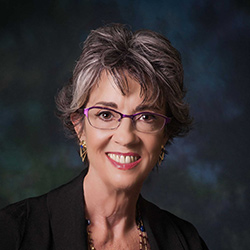By Robyn Stone
A new LTSS Center toolkit focuses on person-centered care. It also illustrates what sets the LTSS Center apart from other research organizations.
A new person-centered care toolkit from the LeadingAge LTSS Center @UMass Boston represents what I value most about the work our researchers do each day. It also illustrates 5 characteristics that I believe set the LTSS Center and its work apart from other research organizations around the country.
1. Our research is timely and relevant to the needs of providers.
All of the LTSS Center’s work is designed to reach one goal: to give providers of aging services the tools they need to implement high-quality services that will help older adults remain healthy and independent. That work has become even more important in the midst of the coronavirus pandemic.
The pandemic focused a spotlight on the important role that nursing homes play in providing quality care to frail and vulnerable older adults. But COVID-19 also revealed ways in which nursing homes could be strengthened and reformed after the pandemic is over.
At the LTSS Center, we believe person-centered care practices, implemented comprehensively, can play a critical role in that reform.
Person-centered care wouldn’t have prevented the pandemic, of course. But person-centered care practices—including collaborative teamwork, consistent assignment of staff, and communal living within small “households”—might have helped reduce COVID-19’s spread in certain care settings and mitigated the pandemic-related social isolation that has plagued nursing home residents for the past 10 months.
Unfortunately, implementing person-centered care isn’t as simple as it sounds. Many nursing homes over-report the extent of their person-centered care adoption, often because they don’t fully understand everything that person-centered care entails. We’re hoping Using Medicaid Funds to Promote Person-Centered Care in Nursing Homes: A Toolkit for Policymakers, and the research behind it, will change that.
2. We strive to build an evidence base for promising practices.
Implementing a program that you think “might” work can be exciting and it might even reap short-term benefits. But the best way to foster sustainable change is to implement programs that have an evidence base behind them. Building that evidence base is the LTSS Center’s job.
Our Toolkit for Policymakers focuses on lessons learned from the Promoting Excellent Alternatives in Kansas Nursing Homes (PEAK 2.0). This pay-for-performance (P4P) program is using standardized education, step-by-step guidance, and rigorous evaluation to help Kansas nursing homes adopt person-centered care comprehensively. The program features an escalating, Medicaid-funded financial incentive that encourages nursing homes to join the program and excel in it.
Our toolkit highlights PEAK 2.0 because our robust evaluation of the program showed that it works. Residents of PEAK 2.0 nursing homes that adopted person-centered care comprehensively reported higher levels of satisfaction and better clinical outcomes when compared to residents of non-PEAK 2.0 homes. Our toolkit documents these impressive outcomes.
3. We work hard to translate research into policy and practice.
The LTSS Center isn’t interested in working on studies that go nowhere and help no one. Rather, we make a deliberate effort to translate all of our research into policy and practice. That’s why we designed a toolkit that educates state policymakers about P4P programs like PEAK 2.0. Our goal is to convince policymakers that P4P programs work, and to offer guidance on how they might design similar programs, gain support for those program from state funding agencies, and develop administrative frameworks to sustain those programs over time.
4. We never work alone.
LTSS Center researchers spend a great deal of time and energy developing relationships with a variety of stakeholders in the LTSS field—including LeadingAge members, academic researchers, policymakers at the federal and state level, representatives of professional associations and interest groups, and myriad other experts in our field. We reach out to these stakeholders regularly to explore their research needs, share our own research findings, and find ways to study promising practices and promote research-based interventions.
Our collaboration with the University of Kansas (KSU) Center on Aging, which manages the PEAK 2.0 program for the State of Kansas, enriched our research on person-centered care, and informed the guidance that our toolkit offers to state policymakers. We and our KSU partner were more effective together than either of us could have been working alone.
5. We won’t stop.
As my mentor, the late Rosalie Kane, often reminded me, translating research into policy and practice is hard work and it takes time.
Our toolkit represents an important step forward in making person-centered care the standard for nursing home care. But the toolkit is far from the last step we will take on this long journey.
We’re in this for the long haul. We’ll continue working hard on this important area of work. You can count on that—and on us.

Robyn I. Stone, DrPH, is senior vice president of research at LeadingAge, and co-director of the LeadingAge LTSS Center @UMass Boston. Her widely published work addresses long-term care policy and quality, chronic care for people with disabilities, the aging services workforce, affordable senior housing, and family caregiving.
